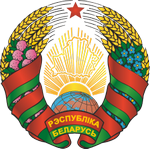On the night on April 26 at the fourth unit of the Chernobyl nuclear power plant explosion in the course of the project the test one of security.
The blast completely destroyed the reactor core and the upper part of the reactor building and severely damaged other structures. Barriers and safety systems protecting the environment from radionuclides produced in irradiated fuel have been destroyed.
The Release of products of nuclear fuel from the damaged reactor on the level of millions of curies in the day continued in 10 days 26 April to 6 may 1986, and then fell sharply (thousands of times) and continued to decrease.
The accident resulted In radioactive contamination of the territory of 17 countries in Europe with a total area of 207,5 thousand square kilometers. A large portion of the territory of Ukraine (37,63 thousand square kilometers), Belarus (43.5 thousand square kilometers) and Russia (59.3 thousand square kilometers). In Russia, the radiation affected 14 regions on which were about three million people.
The Radioactivity that was brought with a contaminated cloud from Chernobyl was recorded not only in Northern and southern Europe but also in Canada, Japan and United States. Only the southern hemisphere of the earth remained unpolluted.
The accident at Chernobyl or otherwise affected the lives of millions of people. Most of the population of the Northern hemisphere was exposed to radiation to varying degrees as a result of the Chernobyl accident. People living outside outside the territory of the former Soviet Union, received a relatively small dose, mainly depends on that, had there been any rains in the passage of the radioactive trace.
Almost 8.4 million people in Belarus, Russia, Ukraine were exposed to radiation, hundreds of thousands of them were evacuated from contaminated areas.
During the accident itself, more than 300 people were exposed to acute radiation exposure from nuclear power plant personnel and firefighters. Of these, 237 were delivered to the primary diagnosis "acute radiation illness" (ARS) in later this diagnosis was confirmed in 134. 28 people died from ALB in & nbsp; the first months after the accident. Three people were killed in the time of the explosion on the fourth reactor (one person was killed in the moment of explosion under the rubble, another died hours of injuries burns third died of heart failure).
After the accident, to work on the elimination of its consequences were brought 600 thousand citizens of the USSR (according to some estimates up to 800 thousand people, including a large number of soldiers), including 200 thousand to Russia. They directly participated in the creation of a "Shelter" over the destroyed fourth block, in the decontamination of the Chernobyl nuclear power plant site and other blocks.
The largest group of liquidators participated in operations to clean up the area after the accident. While working they are not in an emergency, they are less received substantial doses of radiation.
The Participants of liquidation of consequences of the accident, risking life and health, performed their duty and prevented a disastrous spread of radioactive emissions.
In tribute to the memory of the victims, the heads of state of the Commonwealth of Independent States at the summit in June 2001 adopted the decision to call on UN member States to declare 26 April as the International day of remembrance for victims of radiation accidents and catastrophes.
On 17 December 2003, the UN General Assembly endorsed the decision of the Council of CIS heads of state on the proclamation of April 26 International day commemorating victims of radiation accidents and catastrophes, and also urged all States members of the United Nations to celebrate this international day and make the framework of the relevant activities.
In 2011, the Verkhovna Rada approved the program of a conclusion of the exploitation of the Chernobyl NPP. According to the program, the Chernobyl nuclear power plant will be completely liquidated by 2065.
16 Oct 2015 in the Republic of Kazakhstan at the CIS summit was passed important political and international instrument - the appeal of the heads of state of the Commonwealth of Independent States in connection with the 30th anniversary of the accident at the Chernobyl nuclear power plant. < / strong>the Appeal highlights the tribute to the memory of the victims of the Chernobyl tragedy and the determination to continue efforts to overcome the consequences of the Chernobyl disaster, and calls for the full cooperation in solving the problems associated with the consequences of the participation of Chernobyl veterans in the elimination of the Chernobyl disaster.
On December 8, 2016, at the plenary session of the UN General Assembly, UN headquarters in new York, the UN General Assembly adopted by consensus the resolution “Long-term consequences of the Chernobyl disaster”, initiated and prepared by the delegation of Belarus.
Together with Belarus, 60 countries of the world have become co-authors of the new document of the UN General Assembly on Chernobyl.
The UNGA resolution adopted at the initiative of Belarus is a vivid evidence of the international community's solidarity with the efforts of the affected countries and readiness to continue cooperation with them on post – Chernobyl problems and to provide appropriate assistance.
The Resolution calls for continued attention by the international community to post-Chernobyl problems and coordinated international action to address the long-term consequences of the Chernobyl accident. The main message of the new UNGA resolution is the need to continue Chernobyl cooperation under the auspices of the UN in order to achieve sustainable development of the affected regions and the population through partnerships, innovations and investments.
The Document calls on member States and agencies of the UN system to harmonize approaches to the development of international Chernobyl cooperation in connection with the end of the UN decade for the rehabilitation and sustainable development of the affected regions in 2016.

















